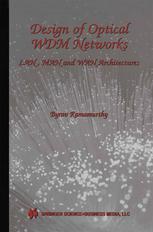

Most ebook files are in PDF format, so you can easily read them using various software such as Foxit Reader or directly on the Google Chrome browser.
Some ebook files are released by publishers in other formats such as .awz, .mobi, .epub, .fb2, etc. You may need to install specific software to read these formats on mobile/PC, such as Calibre.
Please read the tutorial at this link: https://ebookbell.com/faq
We offer FREE conversion to the popular formats you request; however, this may take some time. Therefore, right after payment, please email us, and we will try to provide the service as quickly as possible.
For some exceptional file formats or broken links (if any), please refrain from opening any disputes. Instead, email us first, and we will try to assist within a maximum of 6 hours.
EbookBell Team

4.1
10 reviewsLo, soul! seest thou not God's purpose from the first? The earth to be spann'd, connected by net-work From Passage to India! Walt Whitman, "Leaves of Grass", 1900. The Internet is growing at a tremendous rate today. New services, such as telephony and multimedia, are being added to the pure data-delivery framework of yesterday. Such high demands on capacity could lead to a "bandwidth-crunch" at the core wide-area network resulting in degra dation of service quality. Fortunately, technological innovations have emerged which can provide relief to the end-user to overcome the In ternet's well-known delay and bandwidth limitations. At the physical layer, a major overhaul of existing networks has been envisaged from electronic media (such as twisted-pair and cable) to optical fibers - in the wide area, in the metropolitan area, and even in the local area set tings. In order to exploit the immense bandwidth potential of the optical fiber, interesting multiplexing techniques have been developed over the years. Wavelength division multiplexing (WDM) is such a promising tech nique in which multiple channels are operated along a single fiber si multaneously, each on a different wavelength. These channels can be independently modulated to accommodate dissimilar bit rates and data formats, if so desired. Thus, WDM carves up the huge bandwidth of an optical fiber into channels whose bandwidths (1-10 Gbps) are compati ble with peak electronic processing speed.